Mengyuan Zhang
MM-Eval: A Hierarchical Benchmark for Modern Mongolian Evaluation in LLMs
Nov 14, 2024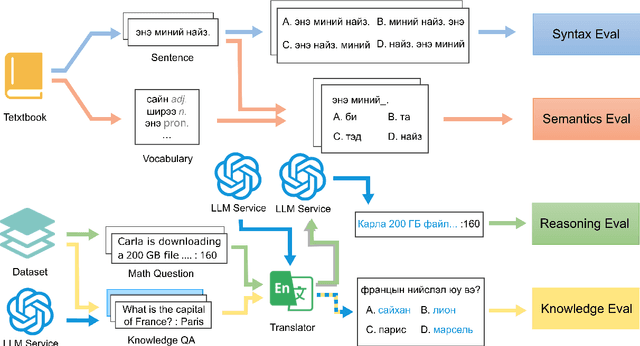
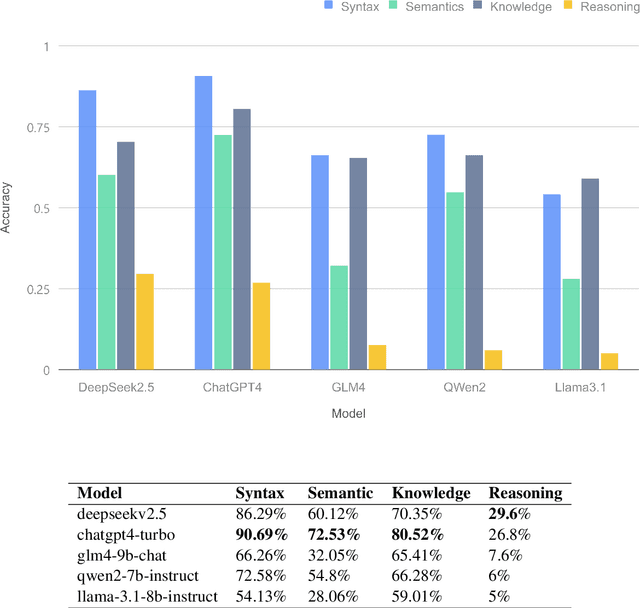
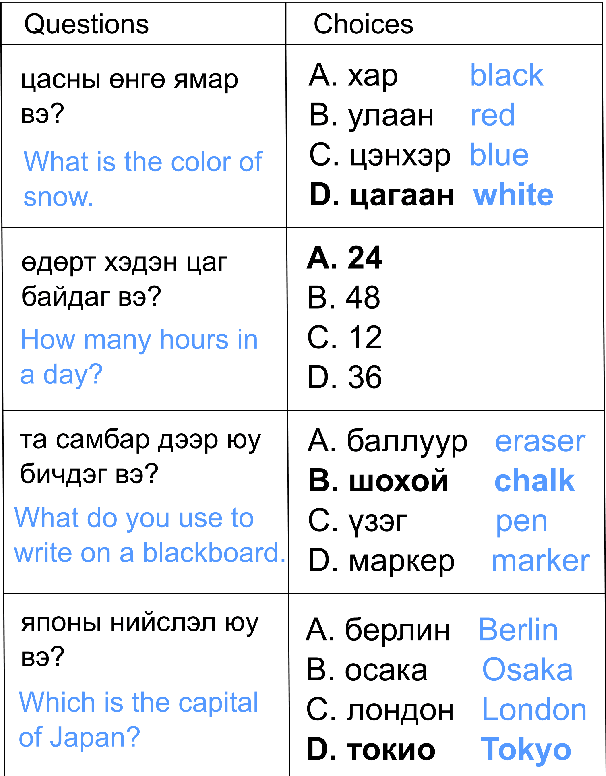
Abstract:Large language models (LLMs) excel in high-resource languages but face notable challenges in low-resource languages like Mongolian. This paper addresses these challenges by categorizing capabilities into language abilities (syntax and semantics) and cognitive abilities (knowledge and reasoning). To systematically evaluate these areas, we developed MM-Eval, a specialized dataset based on Modern Mongolian Language Textbook I and enriched with WebQSP and MGSM datasets. Preliminary experiments on models including Qwen2-7B-Instruct, GLM4-9b-chat, Llama3.1-8B-Instruct, GPT-4, and DeepseekV2.5 revealed that: 1) all models performed better on syntactic tasks than semantic tasks, highlighting a gap in deeper language understanding; and 2) knowledge tasks showed a moderate decline, suggesting that models can transfer general knowledge from high-resource to low-resource contexts. The release of MM-Eval, comprising 569 syntax, 677 semantics, 344 knowledge, and 250 reasoning tasks, offers valuable insights for advancing NLP and LLMs in low-resource languages like Mongolian. The dataset is available at https://github.com/joenahm/MM-Eval.
Hybrid Classification-Regression Adaptive Loss for Dense Object Detection
Aug 30, 2024



Abstract:For object detection detectors, enhancing model performance hinges on the ability to simultaneously consider inconsistencies across tasks and focus on difficult-to-train samples. Achieving this necessitates incorporating information from both the classification and regression tasks. However, prior work tends to either emphasize difficult-to-train samples within their respective tasks or simply compute classification scores with IoU, often leading to suboptimal model performance. In this paper, we propose a Hybrid Classification-Regression Adaptive Loss, termed as HCRAL. Specifically, we introduce the Residual of Classification and IoU (RCI) module for cross-task supervision, addressing task inconsistencies, and the Conditioning Factor (CF) to focus on difficult-to-train samples within each task. Furthermore, we introduce a new strategy named Expanded Adaptive Training Sample Selection (EATSS) to provide additional samples that exhibit classification and regression inconsistencies. To validate the effectiveness of the proposed method, we conduct extensive experiments on COCO test-dev. Experimental evaluations demonstrate the superiority of our approachs. Additionally, we designed experiments by separately combining the classification and regression loss with regular loss functions in popular one-stage models, demonstrating improved performance.
Narrative Feature or Structured Feature? A Study of Large Language Models to Identify Cancer Patients at Risk of Heart Failure
Mar 18, 2024Abstract:Cancer treatments are known to introduce cardiotoxicity, negatively impacting outcomes and survivorship. Identifying cancer patients at risk of heart failure (HF) is critical to improving cancer treatment outcomes and safety. This study examined machine learning (ML) models to identify cancer patients at risk of HF using electronic health records (EHRs), including traditional ML, Time-Aware long short-term memory (T-LSTM), and large language models (LLMs) using novel narrative features derived from the structured medical codes. We identified a cancer cohort of 12,806 patients from the University of Florida Health, diagnosed with lung, breast, and colorectal cancers, among which 1,602 individuals developed HF after cancer. The LLM, GatorTron-3.9B, achieved the best F1 scores, outperforming the traditional support vector machines by 39%, the T-LSTM deep learning model by 7%, and a widely used transformer model, BERT, by 5.6%. The analysis shows that the proposed narrative features remarkably increased feature density and improved performance.
FreeStyle: Free Lunch for Text-guided Style Transfer using Diffusion Models
Jan 28, 2024Abstract:The rapid development of generative diffusion models has significantly advanced the field of style transfer. However, most current style transfer methods based on diffusion models typically involve a slow iterative optimization process, e.g., model fine-tuning and textual inversion of style concept. In this paper, we introduce FreeStyle, an innovative style transfer method built upon a pre-trained large diffusion model, requiring no further optimization. Besides, our method enables style transfer only through a text description of the desired style, eliminating the necessity of style images. Specifically, we propose a dual-stream encoder and single-stream decoder architecture, replacing the conventional U-Net in diffusion models. In the dual-stream encoder, two distinct branches take the content image and style text prompt as inputs, achieving content and style decoupling. In the decoder, we further modulate features from the dual streams based on a given content image and the corresponding style text prompt for precise style transfer. Our experimental results demonstrate high-quality synthesis and fidelity of our method across various content images and style text prompts. The code and more results are available at our project website:https://freestylefreelunch.github.io/.
On Regularized Sparse Logistic Regression
Sep 12, 2023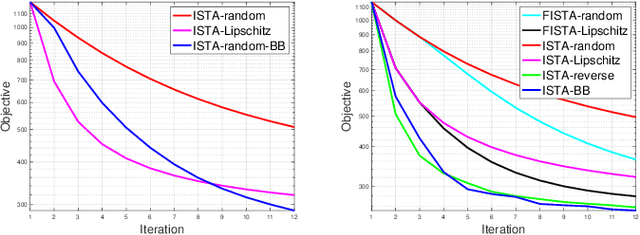
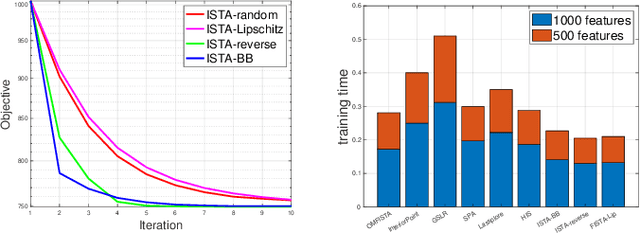

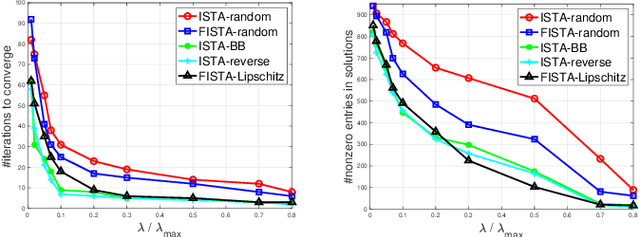
Abstract:Sparse logistic regression aims to perform classification and feature selection simultaneously for high-dimensional data. Although many studies have been done to solve $\ell_1$-regularized logistic regression, there is no equivalently abundant literature about solving sparse logistic regression associated with nonconvex penalties. In this paper, we propose to solve $\ell_1$-regularized sparse logistic regression and some nonconvex penalties-regularized sparse logistic regression, when the nonconvex penalties satisfy some prerequisites, with similar optimization frameworks. In the proposed optimization frameworks, we utilize different line search criteria to guarantee good convergence performance for different regularization terms. Empirical experiments on binary classification tasks with real-world datasets demonstrate our proposed algorithms are capable of performing classification and feature selection effectively with a lower computational cost.
Multi-Task Learning with Prior Information
Jan 04, 2023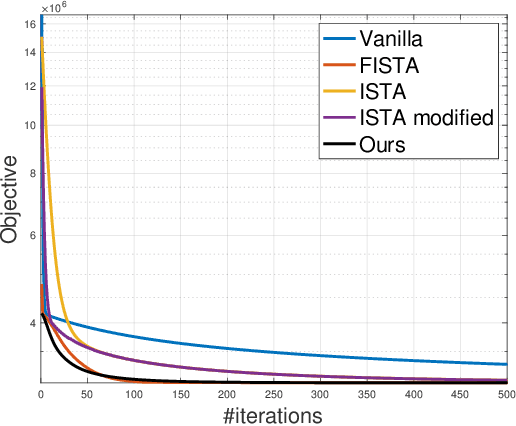
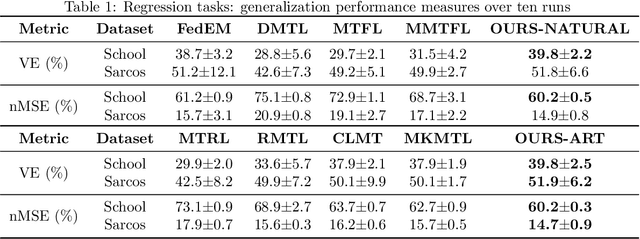
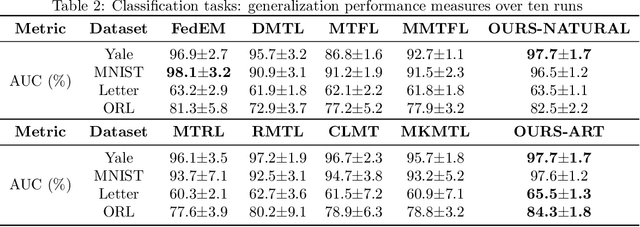

Abstract:Multi-task learning aims to boost the generalization performance of multiple related tasks simultaneously by leveraging information contained in those tasks. In this paper, we propose a multi-task learning framework, where we utilize prior knowledge about the relations between features. We also impose a penalty on the coefficients changing for each specific feature to ensure related tasks have similar coefficients on common features shared among them. In addition, we capture a common set of features via group sparsity. The objective is formulated as a non-smooth convex optimization problem, which can be solved with various methods, including gradient descent method with fixed stepsize, iterative shrinkage-thresholding algorithm (ISTA) with back-tracking, and its variation -- fast iterative shrinkage-thresholding algorithm (FISTA). In light of the sub-linear convergence rate of the methods aforementioned, we propose an asymptotically linear convergent algorithm with theoretical guarantee. Empirical experiments on both regression and classification tasks with real-world datasets demonstrate that our proposed algorithms are capable of improving the generalization performance of multiple related tasks.
Rethinking Symmetric Matrix Factorization: A More General and Better Clustering Perspective
Sep 06, 2022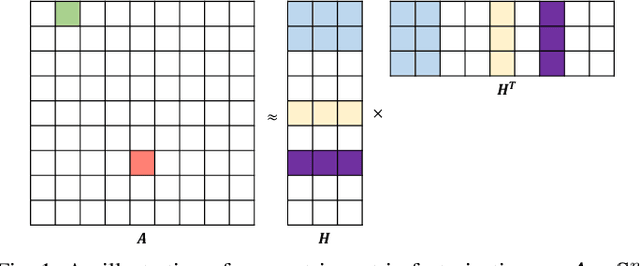
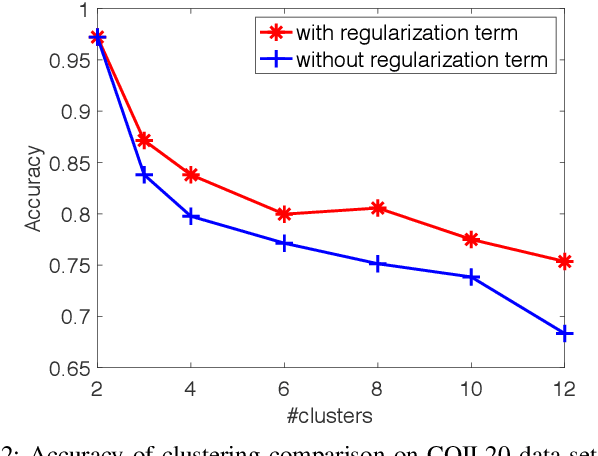
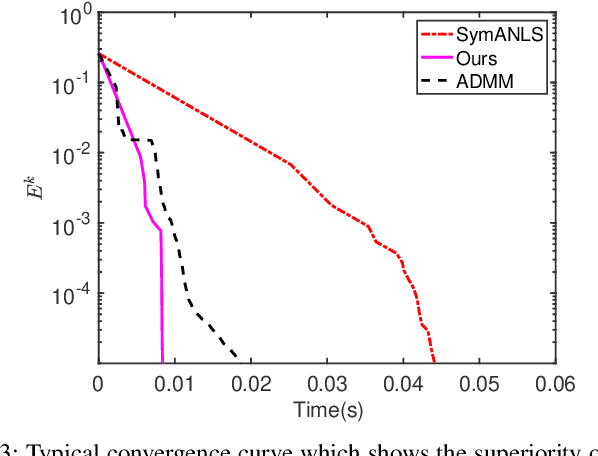

Abstract:Nonnegative matrix factorization (NMF) is widely used for clustering with strong interpretability. Among general NMF problems, symmetric NMF is a special one which plays an important role for graph clustering where each element measures the similarity between data points. Most existing symmetric NMF algorithms require factor matrices to be nonnegative, and only focus on minimizing the gap between the original matrix and its approximation for clustering, without giving a consideration to other potential regularization terms which can yield better clustering. In this paper, we explore to factorize a symmetric matrix that does not have to be nonnegative, presenting an efficient factorization algorithm with a regularization term to boost the clustering performance. Moreover, a more generalized framework is proposed to solve symmetric matrix factorization problems with different constraints on the factor matrices.
DPOAD: Differentially Private Outsourcing of Anomaly Detection through Iterative Sensitivity Learning
Jun 27, 2022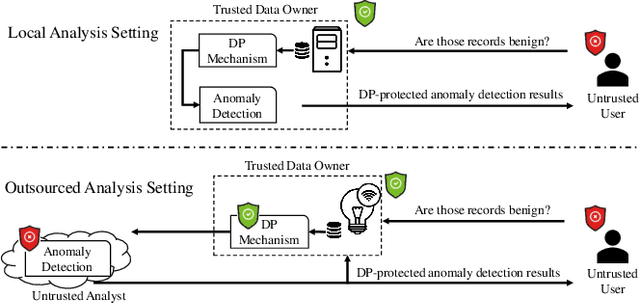
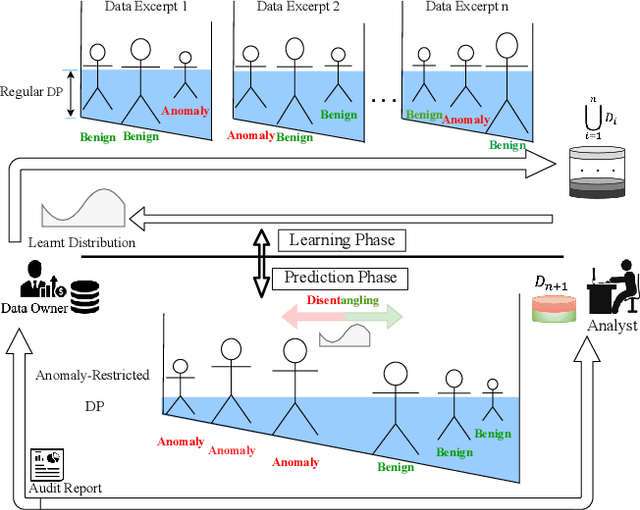
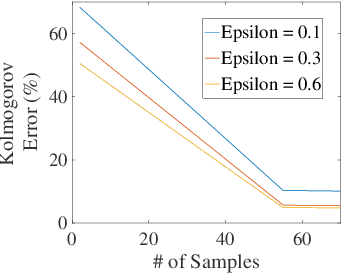
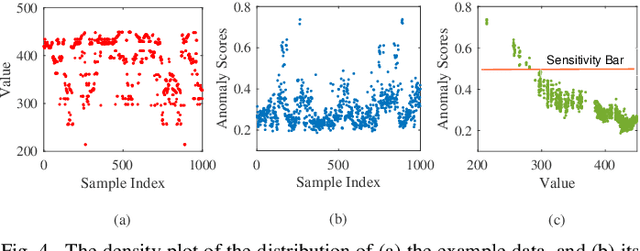
Abstract:Outsourcing anomaly detection to third-parties can allow data owners to overcome resource constraints (e.g., in lightweight IoT devices), facilitate collaborative analysis (e.g., under distributed or multi-party scenarios), and benefit from lower costs and specialized expertise (e.g., of Managed Security Service Providers). Despite such benefits, a data owner may feel reluctant to outsource anomaly detection without sufficient privacy protection. To that end, most existing privacy solutions would face a novel challenge, i.e., preserving privacy usually requires the difference between data entries to be eliminated or reduced, whereas anomaly detection critically depends on that difference. Such a conflict is recently resolved under a local analysis setting with trusted analysts (where no outsourcing is involved) through moving the focus of differential privacy (DP) guarantee from "all" to only "benign" entries. In this paper, we observe that such an approach is not directly applicable to the outsourcing setting, because data owners do not know which entries are "benign" prior to outsourcing, and hence cannot selectively apply DP on data entries. Therefore, we propose a novel iterative solution for the data owner to gradually "disentangle" the anomalous entries from the benign ones such that the third-party analyst can produce accurate anomaly results with sufficient DP guarantee. We design and implement our Differentially Private Outsourcing of Anomaly Detection (DPOAD) framework, and demonstrate its benefits over baseline Laplace and PainFree mechanisms through experiments with real data from different application domains.
Enriched Robust Multi-View Kernel Subspace Clustering
May 21, 2022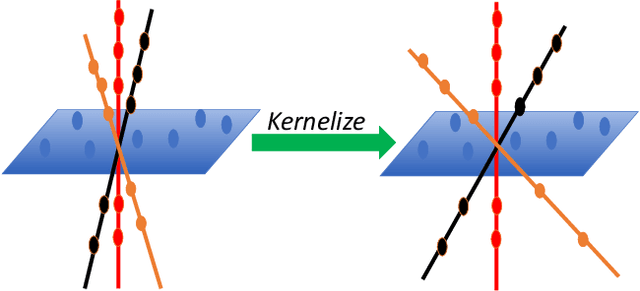
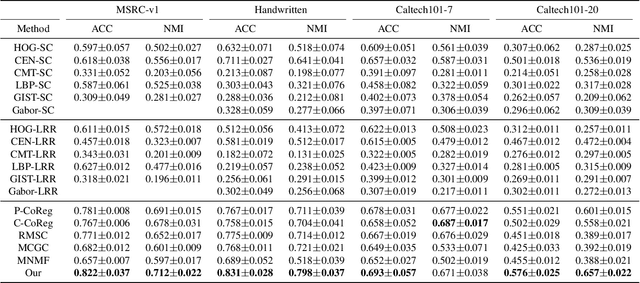
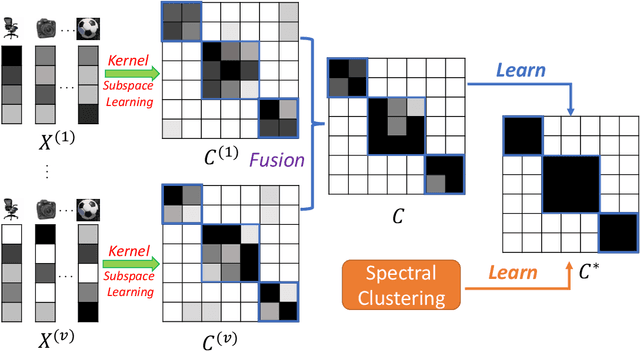
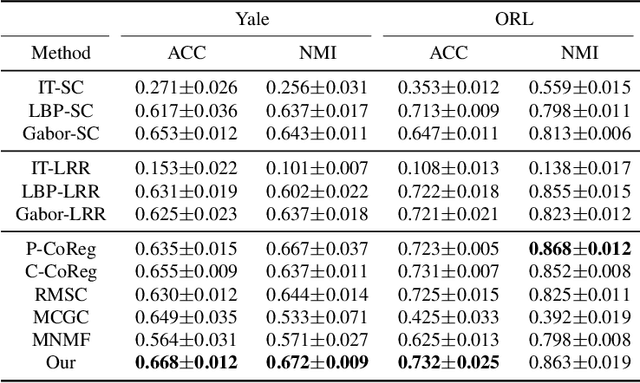
Abstract:Subspace clustering is to find underlying low-dimensional subspaces and cluster the data points correctly. In this paper, we propose a novel multi-view subspace clustering method. Most existing methods suffer from two critical issues. First, they usually adopt a two-stage framework and isolate the processes of affinity learning, multi-view information fusion and clustering. Second, they assume the data lies in a linear subspace which may fail in practice as most real-world datasets may have non-linearity structures. To address the above issues, in this paper we propose a novel Enriched Robust Multi-View Kernel Subspace Clustering framework where the consensus affinity matrix is learned from both multi-view data and spectral clustering. Due to the objective and constraints which is difficult to optimize, we propose an iterative optimization method which is easy to implement and can yield closed solution in each step. Extensive experiments have validated the superiority of our method over state-of-the-art clustering methods.
Free resolutions of function classes via order complexes
Sep 05, 2019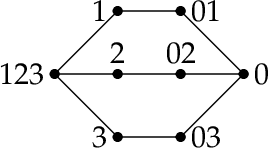
Abstract:Function classes are collections of Boolean functions on a finite set, which are fundamental objects of study in theoretical computer science. We study algebraic properties of ideals associated to function classes previously defined by the third author. We consider the broad family of intersection-closed function classes, and describe cellular free resolutions of their ideals by order complexes of the associated posets. For function classes arising from matroids, polyhedral cell complexes, and more generally interval Cohen-Macaulay posets, we show that the multigraded Betti numbers are pure, and are given combinatorially by the M\"obius functions. We then apply our methods to derive bounds on the VC dimension of some important families of function classes in learning theory.
 Add to Chrome
Add to Chrome Add to Firefox
Add to Firefox Add to Edge
Add to Edge